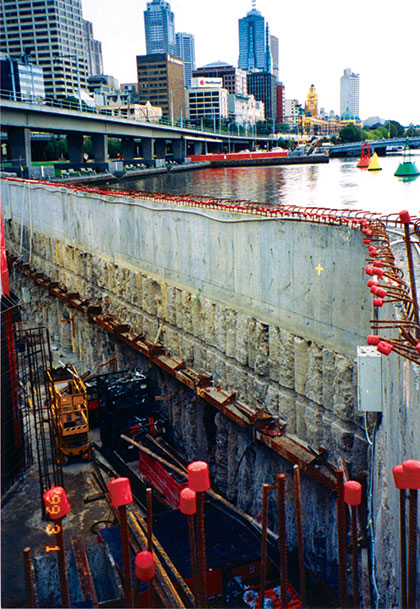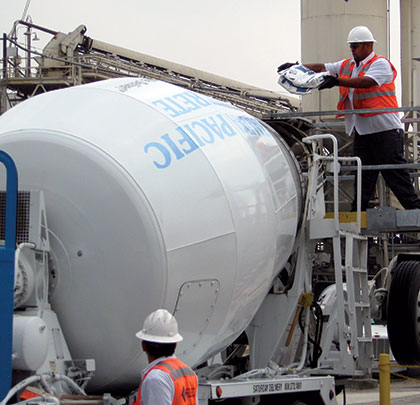Construction is an incredibly collaborative process. Whether you are using a Design-Build or Design-Bid-Build method, there are always multiple groups involved; each who come into the process with their own set of interests and priorities. Undoubtedly, a successful project is contingent on the specialization of each party and the unique knowledge they bring. Like many industries, the overarching issue in project management can be communication. Communication challenges arise where there is no industry standard to guide the dialogue.
THE RIGHT TERMS
Standardized terminology or in many cases, lack thereof, contributes to the breakdown of communication. We have seen this affect the concrete waterproofing sector specifically, as terms such as “waterproof” and “dampproof” were used devoid of education and clarification. The industry did provide basic differentiation between these terms, but it lacked definition. Dampproofing meant that there was separation between porous concrete and moist soil so that the moisture will not be absorbed into the pores of the concrete. No further detail was provided to describe what quantified as “significant” or what level of dampness meant the soil was moist. Moreover, academics did not like the term waterproof because, strictly speaking, few substances are absolutely waterproof. Everything is permeable to some degree and under the right conditions water molecules will pass through a lot of things that we might normally consider to be waterproof. So when we say something is waterproof, we simply mean that liquid water will not pass through in any measurable amount under commonly found conditions. It is important to note that one of those commonly found conditions is relatively high hydrostatic pressure, such as what might be found at the bottom of a deep building foundation or in an underground tunnel. So, an effective waterproofing system must be able to withstand hydrostatic pressure.
Fortunately, the concrete waterproofing industry has since redefined their terminology. In fact, American Concrete Institute’s 212.3R-10 Report on Chemical Admixture document devoted Chapter 15 to Permeability Reducing Admixtures that outlines PRAH and PRAN classifications. Permeability Reducing Admixture–Hydrostatic Conditions or PRAH products reduce water penetration through crystalline growth or a polymer plug, can perform under hydrostatic pressure and are suitable for watertight construction.
Conversely, dampproofing admixtures are now referred to as Permeability Reducing Admixture–Non-Hydrostatic Conditions or PRAN. PRAN admixtures reduce water absorption by repellent chemicals (soap, oils) or partial pore blocking (fine particle fillers). These admixtures are not suitable for concrete exposed to water under pressure and cannot protect in the presence of hydrostatic pressure. Waterproofing against hydrostatic pressure is an important distinction that set PRAHs apart from PRANs.

Classified as a PRAH, Kryton’s KIM Admixture performs well under hydrostatic pressure.
EDUCATION THROUGH DOCUMENTATION
This only touches the surface of what the new chapter offers the industry. With new definitions, testing parameters, selection, and evaluation guidelines, ACI’s 212.3R-10 document is a valuable resource to all, especially to those who would not be naturally well-versed in concrete waterproofing. Ultimately, the document’s objective is to educate stakeholders so that they are empowered to actively contribute to the construction process—be it contractors, owners, or applicators. On a higher level, ACI’s 212.3R-10 document is representative of what an industry can achieve when an issue is identified and a collaborative solution is developed to overcome these challenges. These documents not only ensure that the parties are educated, but through specification also ensure that the right products would be used.
Following the trend of the concrete waterproofing industry, the quality of construction documents has greatly improved over the years, which have put the onus back on the consulting and construction teams. John Bingham of Bingham Hill Architects says, “Compare construction documents from 10 years and now, and the amount control that is put into them has multiplied enormously. There is greater amount of quality control going into buildings to ensure that they are not spending funds on remedial work.” This advancement is across the board in all trades. Bingham says, “It is all systems; windows, walls, fire stopping, installation of sound control; all of these elements and waterproofing is the big one.” The quality of construction documents then trickles downs to the general contractors and the “good enough” attitude is no longer acceptable. Contractors now want tools to contribute to quality control.
SERVING THE CONSUMER
Ultimately, every stakeholder in the construction process is serving the consumer; regardless of what system or vantage point you are coming from. And that consumer is more savvy and well-educated and more demanding than ever. John Bingham comments, “Over the last 10 to 12 years, we have been incredibly more sensitive to ways that how buildings can, or should perform. In the 1930s, if your basement leaked, what would you do about it? We would live with it. Our consumers are now expecting more comforts in life and we should be more cognizant of how it all comes together. Sometimes we are not in control of it. Sometimes the market is in control of it. It is a matter of convincing the decision makers that the alternative is a better solution.”
As contractors, ensuring that your piece of the jobsite flows well with all the other parts is critical. It is important, not only to the success of the overall project, but ultimately to the success of your reputation and your business. With an increased focus on improving construction documents and communication, developing industry terminology, and raising standards, a future where buildings perform better and last longer is foreseeable. ■
About The Author:
Brian MacNeil benefits from more than 20 years in the construction industry. For more than 10 years, he has been devoted to being a concrete waterproofing specialist at Kryton International Inc. (inventors of the benchmark PRAH–Krystol Internal Membrane).
_________________________________________________________________________
Modern Contractor Solutions, July 2013
Did you enjoy this article?
Subscribe to the FREE Digital Edition of Modern Contractor Solutions magazine.

Open Dialogue: Defining PRAH and PRAN with ACI 212


